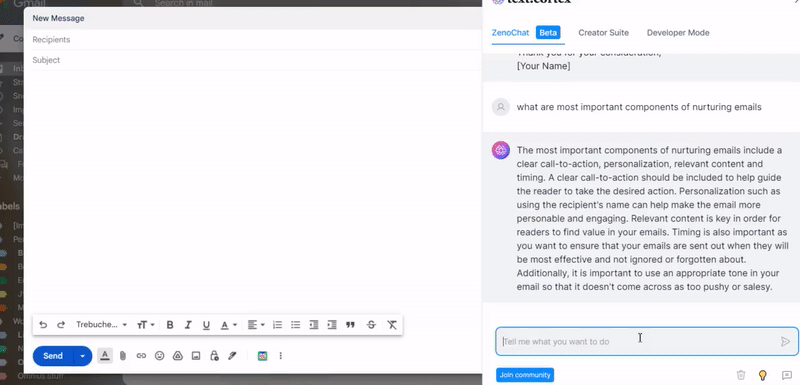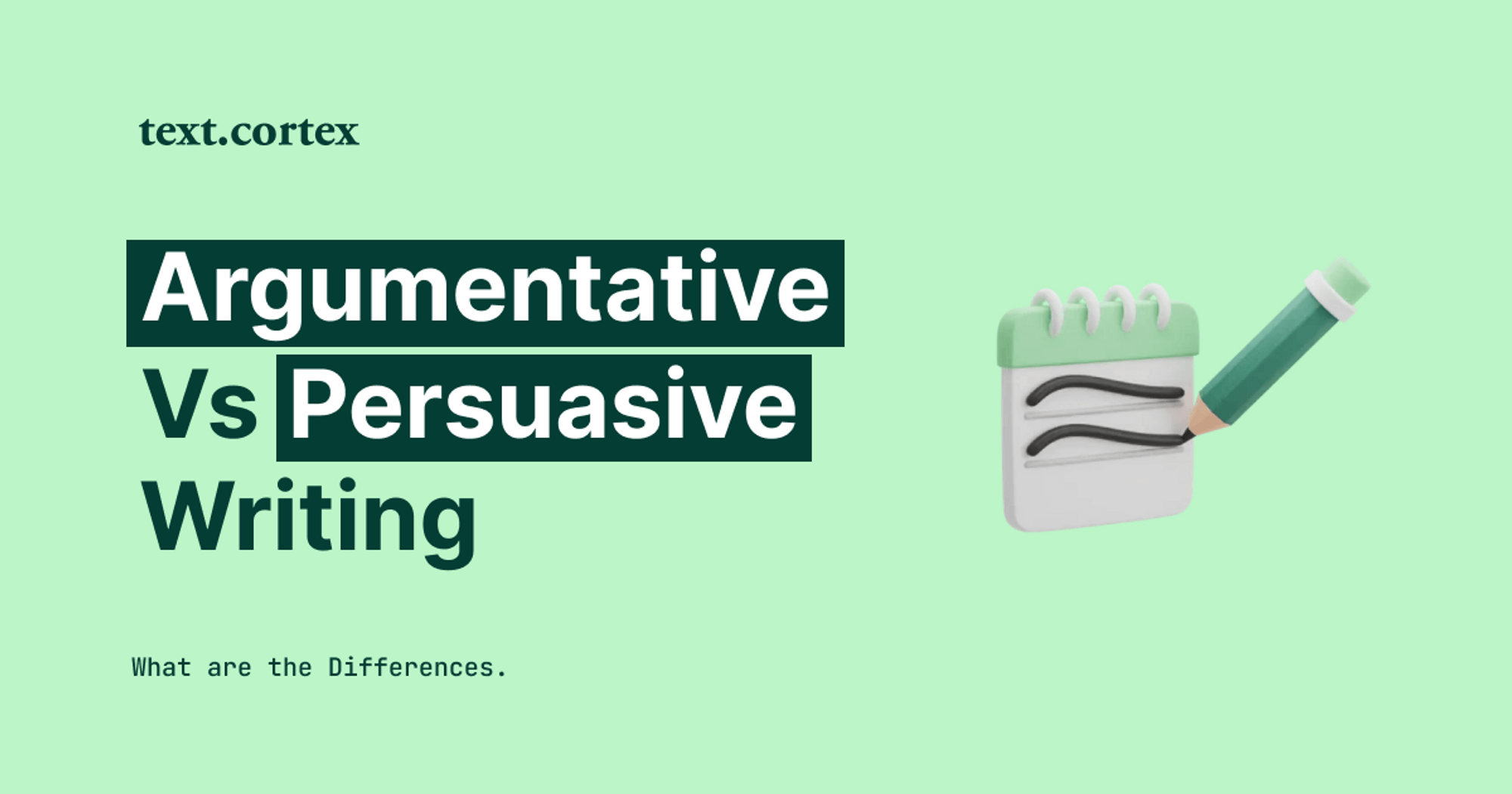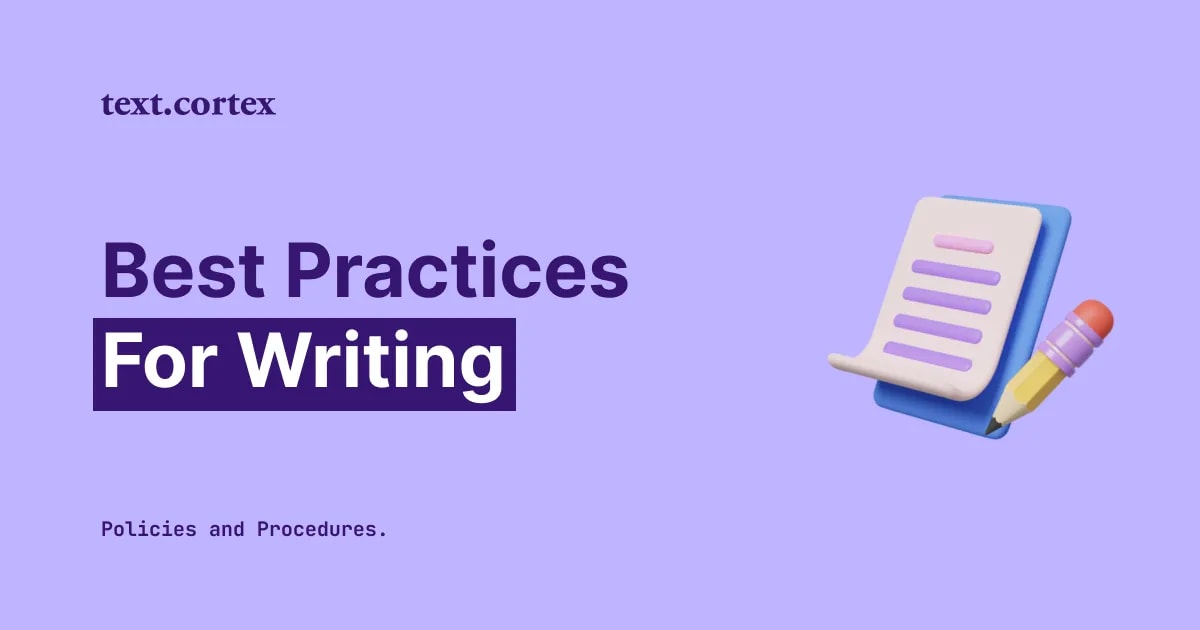Do you have a colleague writer that needs to brag about how he blows away clients with an impressive argumentative campaign?
So, you got yourself thinking,” Isn’t persuasive writing The King?”.
Furthermore, what he describes sounds like informative writing, but not all the way.
In reality, the truth is somewhere in between.
In the end, a logical question forms” What is the difference between argumentative and persuasive writing?”
In today’s article, we will discuss the focus points for both argumentative and persuasive writing styles, followed by examples and tips.
Let us get into it!
What’s the Difference Between Argumentative and Persuasive Writing?
Persuasive writing aims to get the reader to agree with your point of view by presenting a logical argument through the lens of the personal preferences and emotions of the targeted audience.
Argumentative writing uses fact-based conclusions to convince readers that your side is a valid alternative viewpoint with significant value.
You see, argumentative and persuasive writing are similar in that they both aim to convince the reader to adopt a particular position or take a specific action.
Differences in tactics used to achieve results are wholesome and affect preparations and tools needed for a specific task.
Deeper Look Into Argumentative and Persuasive Writing Techniques
To better understand the differences between argumentative and persuasive writing, let us first expand their definitions and then take a sip from both cups to see and feel nuances.
An argumentative text aims to present a well-reasoned argument that supports a particular position, using evidence and logic to persuade the reader that the statement is valid.
The writer's job is to make a case for their position, addressing counterarguments and presenting evidence that supports their side.
On the other hand, the goal of a persuasive text is to motivate the reader to take action or change their behavior.
A persuasive text may rely on emotional appeals or other persuasive techniques to convince the reader to take a particular action.
With this higher-resolution view of differences, we can play out the role of each writer and detriment how they approach the writing process.
How Argumentative and Persuasive Writing Styles Look in Real Life
Let's look at examples of both techniques, and then we will point out differences and their effects.
Example of Argumentative Writing
The science behind the cooling paint is sound and supported by empirical data reported in research in "this linked document."
By using a combination of reflective and radiative properties, the paint can lower the surface temperature of a building by up to 10 degrees Celsius, depending on the color and composition.
Active thermal regulation applied on buildings has ga reater impact and are more flexible, butit also use large quantities of energy.
Example of Persuasive Writing
You won't want to miss out on the amazing benefits of cooling paint!
The science behind it is completely sound and backed up by hard empirical data.
By utilizing the perfect combination of reflective and radiative properties, our incredible paint has the power to reduce the surface temperature of your building by up to a staggering 10 degrees Celsius!
This will increase property value and savings in the long run, and dwarfs any extra expenses you might have now.
Get on board with this amazing technology and start experiencing the amazing benefits for yourself today!
We provide training on how to best implement all available products to professionals and beginners.
With this short introduction, we have established base terms and can continue to talk the same “language.”
Further in the article, we will elaborate main differences between argumentative and persuasive writing and point them out in examples.
Let’s see where that leads us.
Difference Between Argumentative and Persuasive Writing With Samples
1. Define Targeted Audience
The first step after picking a subject and your stand about it is defining your targeted audience.
Argumentative articles, in most cases, do not need a defined targeted audience since they make rational arguments in favor of a preferred stance.
In an argumentative style, you provide statements and logical conclusions that the majority of the general public can understand and agree with.
For example, you can cite some research and present your conclusions derived from it.
“The science behind the cooling paint is sound and supported by empirical data reported in research in "this linked document."
By using a combination of reflective and radiative properties, the paint can lower the surface temperature of a building by up to 10 degrees Celsius, depending on the color and composition.”
Persuasive articles need an intended audience to address their needs and resolve issues plaguing them.
Knowing what the audience’s preferences are, allows you to “attack” those points in an attempt to persuade them to your side.
The persuasive approach plays on emotions, needs, and goals that the targeted audience sees as primary drivers.
“This will increase property value and savings in the long run, dwarfs any extra expenses you might have now.
Get on board with this amazing technology and start experiencing the amazing benefits for yourself today!”
2. Gather Knowledge on the Topic
Before you start writing, be sure you are familiar with the topic so you can support your stance on the matter.
The argumentative technique requires you to research a topic and then align with one side. The facts presented should support the strong points of your claim.
More profound knowledge on the matter is a great benefit since you are taking on opposition and talking about their pros and cons.
Our sample, written in an argumentative manner, shows the “neutral” third-party proof and showcases how your preferred side perfectly fulfills those points.
“The science behind the cooling paint is sound and supported by empirical data reported in research in "this linked document."
Persuasive writing picks sides in the argument and focuses more on presenting how they are perfectly crafted for a targeted audience.
The main knowledge you need is the audience’s pain points so you can show customers are number #1 in your content.
You show what the end goal is and how your side can set the reader in the fast lane to that goal.
“Get on board with this amazing technology and start experiencing the amazing benefits for yourself today!
We provide training on how to best implement all available products to professionals and beginners.?”
3. Consider Whether or Not to Acknowledge Opposition
When writing the argumentative text, you should acknowledge that opposing views exist, so you can counter these views tactfully and bolster your point of view.
When you write an argumentative article, you present multiple perspectives, although it is clear you are cheering for one side.
Argumentative example with one “but” you point major flaw in the opposition approach and introduce a strong point of your side. And you do so without looking like an attention seeker.
“Active thermal regulation applied on buildings have greater impact and are more flexible, but also use large quantities of energy.”
Persuasion has a single-minded goal – to get readers to accept your viewpoint as only viable right there and right then.
You pay little to no attention to opposite views.
With this approach, you avoid the possibility of the reader missing some strong points your product has and let your product shine since there is room only for one on the top.
In our sample, you do not mention any other option to address the issue or knowledge anyone else is providing the same solution as you.
“The science behind it is completely sound and backed up by hard empirical data.
By utilizing the perfect combination of reflective and radiative properties, our incredible paint has the power to reduce the surface temperature of your building by up to a staggering 10 degrees Celsius!
This will increase property value and savings in the long run, dwarfs any extra expenses you might have now.
Get on board with this amazing technology and start experiencing the amazing benefits for yourself today!
We provide training on how to best implement all available products to professionals and beginners.”
4. Adjust Your Posture
Your posture should change in accordance with the image you want to present in the text, and the audience may not see an aggressive attitude as a trait of a balanced view.
You use an argumentative style to show your side as an alternative with high value.
You are sharing your facts, way of thinking, and conclusions without putting pressure on the reader to agree with them.
Using a balanced presentation showcases your expertise and level of confidence in your proposal.
You show one piece of research that you think is important and what the audience can learn from it. Don't try to make it the only or best one.
“The science behind the cooling paint is sound and supported by empirical data reported in research in "this linked document."
By using a combination of reflective and radiative properties, the paint can lower the surface temperature of a building by up to 10 degrees Celsius, depending on the color and composition.”
You, as a persuasive writer, are going for another follower or loyal customer in a more “aggressive way”.
If you are playing on the emotions and desires of a certain group of people, your conversion rate can increase dramatically.
When you use the personal touch of aligning yourself with the reader’s pains, you gain deep trust that goes beyond the topic you are talking about.
You may emphasize the profit or gains the reader will experience from committing to your product.
“You won't want to miss out on the amazing benefits of cooling paint!
Get on board with this amazing technology and start experiencing the amazing benefits for yourself today!”
After Thoughts
Both types of writing share the goal of persuasion, but they have different tones and styles.
Argumentative writing is more objective and logical, and on the other hand, persuasive writing is more subjective and emotional.
If you use them in the right surrounding, both are powerful tools for any campaign or copywriting.
Actually, most campaigns use both simultaneously, exploiting differences between argumentative and persuasive writing to cower larger populations and increase conversion rates.
Campaigns that utilize both techniques may cause headaches for writers supporting them because it is not always easy to transition between them.
Experienced writers, often enough for this purpose, are turning to AI writing assistance tools like TextCortex.
How TextCortex Can Help With Argumentative and Persuasive Writing?
In our work, we noticed that ZenoChat is an excellent tool to help you get started with writing with the right attitude and technique.
ZenoChat combines artificial intelligence and natural language processing (NLP) to provide a customized and insightful response to conversational requests.
To use this feature, click on the icon in the bottom right corner. Once you open the creator suite, you can type any kind of request for an AI to make for you.

On the other hand, if you need assistance to abridge the difference between argumentative and persuasive writing styles, you experiment with one of 10+ narratives to express your message, using the “Tone” feature.
Simply highlight the text, and choose the option from the rewriting menu that will appear below the selected text.
The TextCortex add-on will turn the task of rewriting your articles from a tedious chore into a source of pleasure as you experiment with new ways to convey the same idea.
Simply highlight the desired text segment and click the option that best suits your needs.
What’s more, you’ll have access to 60+ AI templates in Creators Suite that should cover all your writing and rewriting needs.
You can use these advanced features whether you're an experienced writer or just starting out:
👌Readability checker — gives you an assessment of how well an average person can understand your ideas.
👌 Zeno mode — random ideas on a subject can be shaped in a coherent train of thought.
👌 Brainstorming features — pressing CTRL+SHIFT+K on your keyboard lets the program create ideas for your content.
👌 Text-to-speech to hear your content sounds on the receiving end.
Why Should You Consider Using TextCortex?
👏 10 free creations per day with our freemium plan.
👏 All features on 2000+ online platforms.
👏 No credit card info is required.
👏 Affordable premium plans, in case you want to upgrade.
Join TextCortex right now to try out all of its cutting-edge features for writers.
FAQ
Is Argumentative Writing Harder to Use Than Persuasive?
In general, no, that depends on the writers' preferences. Someone with a higher social IQ might find it easier to write persuasive articles, and the same goes for engineers and argumentative.
.jpg)




